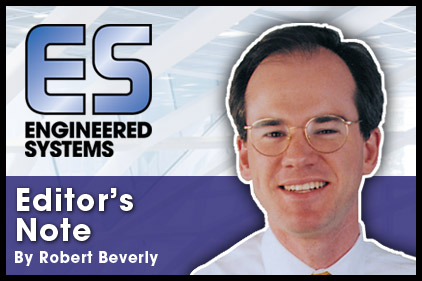It’s been 15 years since I went to my first AHR Expo, walked around, and said to myself, “Wow, this crowd is pretty much all dudes.”
Of course, the crowd in the huge hall wasn’t entirely male. There were plenty of women working for exhibiting manufacturers on the marketing side, and there still are. The event also included more than a couple, uh, presenters? Spokesmodels? Women hired to hand out tchotchkes and basically make attendees look twice toward a booth, as if they might be doing the same next week when the boat show comes through town.
What there weren’t many of at all, though, were women there as attendees, which was my first clue at how male-dominated this part of the engineering sector really was. I remember coming back and writing about it in an early column in this space. To a newcomer, the elephant in the room was the women who weren’t.
FLASH FORWARD
So what’s changed? A study about halfway between then and now showed that almost 20% of female undergraduates took some sort of engineering degree. That sounds like some progress. However, it also noted that these women seemed to gravitate toward other engineering areas and less so toward mechanical (or electrical). Why do you think that is? With environmental concerns only increasing in profile over the years, I think these areas would gradually draw more interest as building energy consumption has come more to the fore.
And in fact, my anecdotal observations support that the situation has gotten a bit better. Away from the Expo floor and into the seminar rooms, it used to be somewhat unusual for a modest conference session to include even one woman, and two was almost unheard of. But as we’ve seen a younger generation of attendees coming up, that group has brought a little more balance with it. I would notice the difference at our intelligent buildings events and other conferences over the years, up through January’s event in New York. It’s nowhere near on par with the general population, of course, but it’s better.
Maybe that’s due in part to organizations like the Society of Women Engineers (http://societyofwomenengineers.swe.org) or the IEEE’s Women In Engineering group. The overall shift of Baby Boomers toward retirement may be increasing general job opportunities at some firms, and ever-evolving ranks of leadership can’t hurt, either, as occasional remnants of more “traditional” ways of thinking leave the workplace.
Which brings us to what got me thinking back to that first Expo at the end of the 20th century: this year’s ASHRAE New Face Of Engineering award winner, Rebecca Delaney, P.E., a mechanical engineer at Primera Engineers (Chicago). The full news item is on page 50, but her resume includes some international community service as well as working with technologies like geothermal for her clients. (Not her project, but coincidentally, we feature a geothermal project in the Chicago area in this issue as well.) I have to think that Ms. Delaney picking up an award for young engineers, in part for helping to deliver a technology that was much less common 15 years ago, is a harbinger all the way around for better buildings in the future.
Of course, longtime ES readers have been learning from Rebecca Ellis’ commissioning column for even longer than I’ve been here, and Amanda Parolise has been providing those popular and handy “Facility Files” checklists for many years now, too. Nobody here would convene a design team or operations team to collaborate on a problem, explain the problem, and then instruct you, you, you, and you not to speak. Let’s hope the educational and professional opportunities and incentives continue to help us get all the best available minds in the room for the best results.



